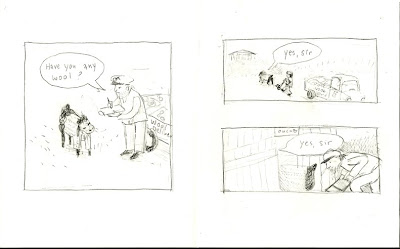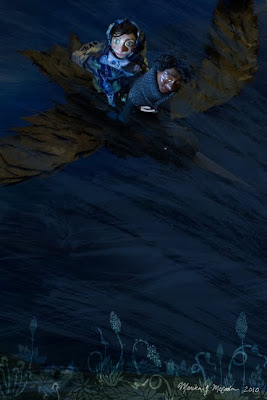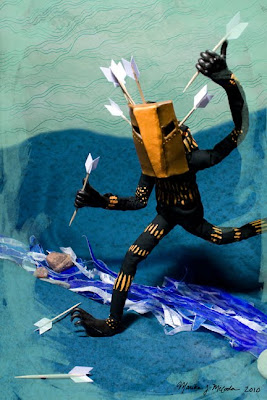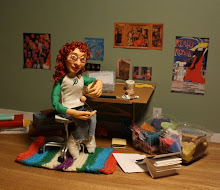The Tortoise and the Hare




The Frog and the Ox




The Fox and the Grapes




















 Little Jack Horner
Little Jack Horner



 BaBa Black Sheep
BaBa Black Sheep







But the birds of the forest flocked to food and Hansel and Gretel were soon lost. Spying a house through the trees, they headed toward it and were soon welcomed inside. Though the cottage was sweet, there was something strange about the Old Woman who lived there.

That night the Old Woman grabbed Hansel, cackling, “I do love a good roast child!” Though terrified, Gretel would not see her brother condemned to the oven. As the Old Woman muttered to herself, Gretel reached out, pushing with all her strength, and shoved the Old Woman into the oven, pulling Hansel to safety as she did.

Hansel and Gretel fled the cottage, weaving and twisting through the trees. As dawn approached, they found the edge of the woods.

“Children! Were have you been?” Their father greeted them with hugs and admonishments; “You must never go into the forest alone again. Oh, I missed you so!” Their stepmother, however, was nowhere to be seen.

Chapter 1: The Reader of Books
‘Did you know,’ Mrs Phelps said, ‘that public libraries like this allow you to borrow books and take them home?’‘I didn’t know that,’ Matilda said. ‘Could I do it?’
‘Of course,’ Mrs Phelps said. ‘When you have chosen the book you want, bring it to me so I can make a note of it and it’s yours for two weeks. You can take more than one if you wish.’

Chapter 2: The Ghost
‘I’m fed up with your reading anyway. Go and find yourself something useful to do.’ With frightening suddenness he [Mr Wormwood] now began ripping the pages out of the book in handfuls and throwing them in the waste-paper basket.Matilda froze in horror. The father kept going. There seemed little doubt that the man felt some kind of jealousy. How dare she, he seemed to be saying with each rip of a page, how dare she enjoy reading books when he couldn’t? How dare she?
‘That’s a library book! Matilda cried. ‘It doesn’t belong to me! I have to return it to Mrs. Phelps!’
There are many books in this world I do not agree with and hope no one ever reads, but the idea of directing violence toward a book is unthinkable, as it rends not just thoughts, but, in the case of fiction, entire worlds. Though we as readers already dislike Mr. Wormwood, this scene establishes Matilda’s father as a truly horrid man and enables us to laugh at him later when Matilda exacts her devious revenge.


 It's integral to the story that the spaceship have a nose. Not just a spaceship nose, but one that looks a bit more like a real nose. The silhouettes have definitely been helpful thus far. Additionally, the ramp out will then look a little like a mouth but I'm trying to make it not too scary, simply interesting if you happen to notice it. I considered having a red carpet tongue, but it seems like a bit too much. We'll see, maybe it'll work when I eventually get to color studies.
It's integral to the story that the spaceship have a nose. Not just a spaceship nose, but one that looks a bit more like a real nose. The silhouettes have definitely been helpful thus far. Additionally, the ramp out will then look a little like a mouth but I'm trying to make it not too scary, simply interesting if you happen to notice it. I considered having a red carpet tongue, but it seems like a bit too much. We'll see, maybe it'll work when I eventually get to color studies.


 As I was dividing up the text for the 32-page picture book format, I was thinking how much I wished a professor had given me a text a week and had me divide it up into a 32 page format and then compared and shared ideas with the other students in my class. It would be agonizing the first few weeks, but I think it would be a great way to develop pacing along a story arc. If I ever end up teaching (who knows what could happen in the next 30 years) I may play this card... Anyway, the idea's up for grabs if anyone wants to implement it. Maybe I'll even get my act together and make myself do it.
As I was dividing up the text for the 32-page picture book format, I was thinking how much I wished a professor had given me a text a week and had me divide it up into a 32 page format and then compared and shared ideas with the other students in my class. It would be agonizing the first few weeks, but I think it would be a great way to develop pacing along a story arc. If I ever end up teaching (who knows what could happen in the next 30 years) I may play this card... Anyway, the idea's up for grabs if anyone wants to implement it. Maybe I'll even get my act together and make myself do it.


 Chapter 4: Shadows & Small Trees
Chapter 4: Shadows & Small Trees
